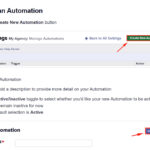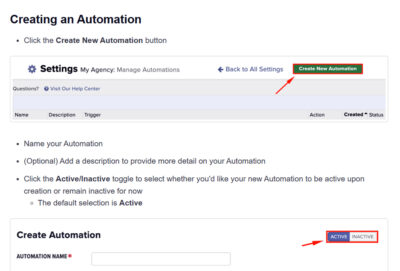Recruiting, hiring, and training new employees is expensive—averaging $4,000 per hire—and the cost of turnover can be astronomical, reaching $16,000 for entry-level employees and $120,000 for mid-level associates. With these figures in mind, it is no wonder that employers are laser-focused on making the right hire from the outset. A poor hiring decision not only drains resources but also impacts morale, productivity, and, ultimately, the bottom line. To mitigate these risks, organizations must use the right tools to assess candidates effectively.
Traditionally, the interview was the cornerstone of the hiring process. While it remains a vital component, interviews have limitations. Some candidates excel in interviews, giving a skewed representation of their suitability for the role.
The information gleaned from interviews often focuses on past performance, which, while useful, is not always a reliable predictor of future success. In response to these challenges, companies have turned to a range of modern assessment tools to gather more comprehensive data and improve their chances of selecting the right candidate. These tools enable hiring managers to adopt a holistic approach to candidate assessment, looking beyond resumes and interviews to make better, data-driven decisions.
In this article from Top Echelon Recruiting Software, we will explore the power of modern assessment tools in the hiring process.
The Evolution of Applicant Tracking Systems (ATS)
Applicant Tracking Systems (ATS) have been a staple of recruitment for decades, originally designed to streamline the influx of applications and manage the hiring workflow. However, these systems have evolved significantly, transforming into powerful platforms that support every stage of the recruitment process—from initial sourcing to onboarding and beyond.
1. Advanced Screening Capabilities and AI Integration
Modern ATS platforms go far beyond basic resume management. They can parse resumes, automatically match skills to job requirements, and filter candidates based on specific criteria. This is especially useful when dealing with high volumes of applications. Many ATS platforms now integrate artificial intelligence (AI) to evaluate resumes more intelligently, identifying key skills and experiences that align with the role.
For example, consider a recruiter who has 200 resumes to review for a single job opening. A robust ATS will use advanced algorithms to scan these resumes and narrow the pool to the top 10 or 20 candidates who best meet the requirements. This saves countless hours and ensures that recruiters can focus on engaging with the most promising candidates more quickly. Additionally, ATS platforms can include prescreening questions tailored to specific roles, allowing for a more targeted filtering process early on.
2. Centralized Candidate Profiles for Informed Decision-Making
One of the most significant advancements in ATS technology is the ability to create comprehensive, centralized candidate profiles. Systems like Top Echelon Software enable recruiters and hiring managers to consolidate all data points related to a candidate—such as resume details, interview notes, psychometric testing results, and simulation assessments—in a single location. This centralized approach fosters better decision-making by providing a holistic view of each candidate, facilitating comparisons, and reducing bias.
Furthermore, these profiles can be updated continuously, allowing stakeholders across the organization to access real-time information. Hiring managers can track where candidates are in the process and collaborate seamlessly with HR, ensuring a unified approach to recruitment.
3. Enhanced Collaboration and Communication Across Teams
Modern ATS platforms are designed to be accessible to various stakeholders, not just HR professionals. Hiring managers, team leads, and even department heads can easily access the system to review candidates tied to their requisitions, track their progress, and contribute insights throughout the interview process. This increased engagement ensures that top prospects are identified and acted upon quickly, reducing the time-to-hire and improving the candidate experience.
The integration of communication tools within ATS platforms also allows for a streamlined approach to candidate outreach. Whether via SMS, email, or social media, recruiters can connect with candidates through their preferred communication channels, enhancing engagement and speeding up the recruitment process. For instance, platforms like SparkHire provide video interviewing capabilities, enabling asynchronous interviews that allow both candidates and recruiters to manage their time more effectively.
Psychometric Profiling: Unlocking Deeper Insights into Candidates
While experience, education, and technical skills are essential, they do not provide the complete picture of a candidate’s potential. This realization has led to the growing adoption of psychometric profiling as a critical component of the hiring process. As of 2023, over 70% of large employers have integrated psychometric testing into their recruitment strategies, a significant increase from 57% in 2013.
1. Going Beyond the Resume: Evaluating Attitudes and Personality Traits
Psychometric tests assess a candidate’s psychological makeup, including their attitudes, values, and core personality traits. These assessments measure factors that are often hard to evaluate in a traditional interview setting, such as emotional intelligence, resilience, adaptability, and cultural fit. For instance, while a resume might demonstrate a candidate’s experience in project management, a psychometric test could reveal their propensity for collaborative work, their response to stress, and their overall positivity—traits that are crucial for success in many roles.
2. Predicting Long-Term Success and Cultural Fit
One of the primary benefits of psychometric profiling is its ability to predict how well a candidate will perform in a specific environment and whether they are likely to remain with the company long-term. Traditional interviews often rely on subjective judgment, which can be influenced by unconscious biases or first impressions. In contrast, psychometric tests provide objective data that helps hiring managers make more informed decisions, reducing the risk of turnover and enhancing overall team cohesion.
For example, a company looking to hire a sales manager might use a psychometric test to assess traits like assertiveness, motivation, and adaptability. These insights can help determine if the candidate is likely to thrive in a high-pressure, results-driven environment.
3. Integrating Psychometric Data into Broader Assessment Tools
Modern ATS platforms allow for the seamless integration of psychometric profiling data, enabling recruiters to compare results across multiple candidates easily. By consolidating these insights with other assessment tools, such as skills tests and simulation exercises, hiring managers can develop a more comprehensive understanding of each candidate’s potential.
Simulation Assessments: Bringing the Job to Life
While interviews and tests provide valuable insights into a candidate’s qualifications and fit, they don’t always capture how a candidate will perform in real-world situations. This is where simulation assessments come in, allowing employers to observe candidates in action before making a hiring decision.
1. Realistic Scenarios for Accurate Performance Evaluation
Simulation assessments place candidates in realistic job scenarios that mimic the challenges they would face in the role. For example, a customer service representative might be asked to handle a mock call with a difficult customer, testing their problem-solving skills, empathy, and communication abilities. Similarly, a candidate for a financial analyst position might be asked to analyze a set of data under a tight deadline, evaluating their analytical skills, attention to detail, and ability to perform under pressure.
These simulations go beyond hypothetical questions, providing a more objective measure of a candidate’s capabilities. They help identify strengths and weaknesses that might not be apparent in a traditional interview setting.
2. Objective Measurement of Core Competencies
Unlike interviews, which can be influenced by a candidate’s ability to articulate their thoughts or present themselves well, simulation assessments provide a more objective view of a candidate’s actual performance. They measure core competencies in action, such as critical thinking, organizational skills, and stress tolerance, offering a more accurate prediction of how the candidate will handle the day-to-day responsibilities of the job.
3. Enhancing the Candidate Experience
Candidates appreciate the opportunity to demonstrate their abilities in a practical setting, which can enhance their perception of the company and its recruitment process. A positive assessment experience can make candidates more likely to accept a job offer and remain with the company long-term.
Reference, Background, and Additional Checks: Ensuring a Comprehensive Evaluation
Once candidates have been assessed through interviews, psychometric tests, and simulations, the final step in the evaluation process involves verifying their history and suitability for the role. Reference checks, background checks, credit checks, and drug testing remain essential tools to ensure a comprehensive evaluation.
1. Automated and Streamlined Reference Checks
Traditional reference checks are often time-consuming and inconsistent. Modern tools like SkillSurvey automate this process, reducing the time required by up to 92% compared to manual methods. These platforms provide structured, data-driven reference checks that offer more reliable insights into a candidate’s past performance and workplace behavior.
Automated reference checks are also less prone to bias, as they follow a standardized process, asking the same questions to each reference. This consistency enhances the credibility of the information gathered and supports more objective decision-making.
2. Efficient Background and Credit Checks
Background and credit checks are crucial for roles requiring a high level of trust, security, or financial responsibility. Tools like GoodHire simplify this process by managing it online, providing instant access to results. This efficiency allows employers to make hiring decisions faster while ensuring compliance with legal and regulatory requirements.
For roles where financial integrity is essential, such as in banking or accounting, a comprehensive credit check can provide additional assurance of a candidate’s suitability. Similarly, background checks help verify credentials and employment history, protecting against fraudulent claims.
3. Drug Testing and Other Compliance Checks
In industries where safety and compliance are critical, such as healthcare or transportation, drug testing is a standard part of the hiring process. Advanced platforms allow employers to manage these checks efficiently, ensuring that all candidates meet the necessary requirements. These tools streamline the process, providing quick results and minimizing delays in the hiring timeline.
A Comprehensive, Data-Driven Approach to Hiring
The combination of these tools—ATS platforms, psychometric profiling, simulation assessments, and advanced verification checks—represents a shift towards a more holistic, data-driven approach to hiring. By integrating multiple assessment methods, companies can gain a deeper understanding of a candidate’s capabilities, character, and fit within the organization.
1. Making the Hiring Process More Efficient and Effective
Modern assessment tools are designed to streamline the recruitment process, making it faster, more efficient, and more accurate. By combining data from these tools with traditional interview insights, hiring managers can make more confident decisions, ultimately leading to the selection of high-performing, long-term employees.
2. Building a Resilient Workforce Ready for the Future
Investing in the right assessment tools helps build a workforce that is resilient, adaptable, and ready to meet future challenges. These tools enable companies to identify not only the right skill sets but also the right mindsets, ensuring that new hires are aligned with the company’s values and culture.
Strategic Investment in Hiring Tools
Hiring is not just about filling a vacancy—it’s about strategically building a team that will contribute to the organization’s long-term success. By investing in modern assessment tools and platforms like Top Echelon Software, employers can enhance every step of the recruitment process, ensuring they hire the right people, the first time.
To learn more about how Top Echelon Software can support your recruitment efforts and help you make data-driven hiring decisions, contact us today! You can also request a live demo of our software!








